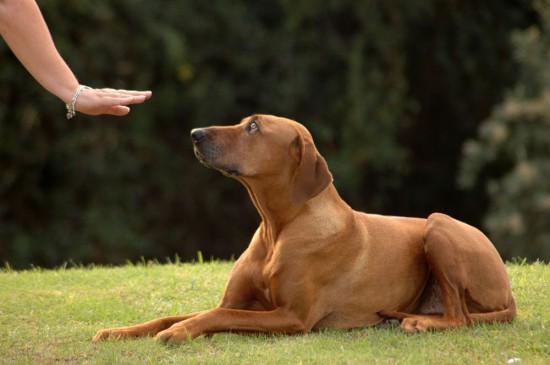
If you have problems having your dog obey?commands,?it's high time that you immerse yourself in undertaking a little bit of basic dog training, made simple. It is important?that you begin to train ...
If you have problems having your dog obey?commands,?it's high time that you immerse yourself in undertaking a little bit of basic dog training, made simple. It is important?that you begin to train your pet when he (or she) is very young, as those first few months of your puppy抯 life are when you can have the most profound influence on him. It is no exaggeration to say that this is the period of his life where he will be shaped into the dog he is going to be when he is an adult.
The first and most basic of dog training is to get your dog to sit and come.
Teaching him those two simple tasks is essential, as this will assist him hugely in his efforts to be able to learn.
These commands are appropriate for various different situations. For example, if your dog jumps up at you in excitement (obviously a pretty common occurrence with a relatively excitable young dog) making him sit will immediately get him down.
In fact, the "come" command is probably the single most important one that you can ever teach your dog. When you are taking him for a walk, and you let him off the lead, then using this command should ensure that he will immediately come back to you, saving you the embarrassment of having to chase him around the park and shouting after him.
The good news is that actually teaching your dog how to respond correctly to the "come" instruction requires only the most basic of techniques, but a great deal of repetition.
The simplest way to get your dog to understand the command is to hold a toy in one hand and a treat in the other, and then simply walk slowly away from him, ensuring that he stays in the same place, and doesn't try to follow. Then, hold out the toy and call him to you in an excited manner, and, when he comes over, give him the treat from your hand.
Here抯 an important tip. Make sure that you always use the same language for the "come" command that you are planning to use in the future. If you change the words you use, your dog will become confused, which, in turn, will make him unhappy, as he will be unable to respond to what his owner is?telling him to do.
By doing this several times a day, you should find that your dog will pick up the meaning of "come" very quickly, although you must also remember to have lots of long breaks, so that he doesn't get bored and stop enjoying it. And, of course, don't forget the treats!
Getting him to "sit" may be a little bit easier.. Again, it only requires a very basic dog training routine, and a good deal of patience.牋
As soon as you have mastered the come instruction to bring your pet to you,?you can proceed to the 揝it?instruction.?To do this hold a treat above his head until his bottom hit the floor and immediately say 'sit.... GOOD BOY!' and give him the treat. When he starts to associate the command with the action, replace treats with praise, giving him the odd treat to reinforce the good behaviour.
牋
Then, when he actually sits down, give him a treat and a great deal of praise.
If your objective is to get your dog to sit for a longer period, just hold off giving him the treat and the accompanying praise. Get him to sit exactly as before, but take your time bending down to him and giving him his tidbit.
To conclude, basic dog training is both very simple and extremely effective, not to mention, rewarding. And, once these two simple commands have been mastered, you can move on to more complex dog training. Ten Fun Facts About Dogs For Kids
Ten Fun Facts Abo
Ten Fun Facts About Dogs For Kids
Ten Fun Facts Abo
 Ways to keep your dog warm in winter
Ways to keep your dog warm in winter
In the ev
Ways to keep your dog warm in winter
Ways to keep your dog warm in winter
In the ev
 Showing Your Cat
Showing Your Cat If you share your home with cats, have you
Showing Your Cat
Showing Your Cat If you share your home with cats, have you
 Ten Tips For Finding A Good Canine Behaviourist
Ten Tips For Find
Ten Tips For Finding A Good Canine Behaviourist
Ten Tips For Find
 Keeping Pets Safe This Christmas
Keeping Pets Safe
Keeping Pets Safe This Christmas
Keeping Pets Safe
Copyright © 2005-2016 Pet Information All Rights Reserved
Contact us: www162date@outlook.com